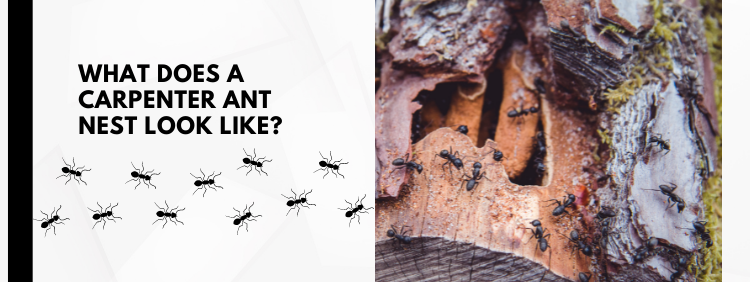Oakville Pest Control: What Does A Carpenter Ant Nest Look Like?

Warmer temperatures in Oakville over the last few months have been more than ideal for enjoying the outdoors. However, warmer weather also means that carpenter ants have had time to be more active. The more hospitable environment gives them time to stock up and prepare for the winter months. Carpenter ants prepare for the colder months by securing safe housing for their queens and eggs to ensure their safety so they can grow to maturity. Unfortunately, that safe housing can sometimes be inside the walls of your house. Find out how to accurately identify a carpenter ant nest and who to call for carpenter ant control in Oakville if you suspect an infestation in your home.
First Signs of Carpenter Ant Nesting
Carpenter ant nests are often confused with termites though calling in professional services for either one is a safe bet to secure the integrity of your home. One of the primary differences between termites and carpenter ants is that carpenter ants do not eat wood, whereas termites do. This means that identifying a nest as a carpenter ant’s or a termite’s can be pinpointed by the presence of sawdust. Carpenter ants chew through wood and clear it out to make their nests. Termites eat the wood to get the cellulose, and both byproduct and waste exit in different forms other than sawdust.
If you find small piles of sawdust in your home, check for tiny holes near or around the mound. If you see spots, you likely have a sure case of carpenter ants and should call for professional services before the problem worsens.
Internal Workings of Carpenter Ant Nesting
Your home is not the only place that carpenter ants make nests, and nests also pop up in other softwood opportunities like trees or nearby stumps. Unlike outdoor options, however, when carpenter ants make a nest in your walls, the damages must be treated by pest control professionals and then repaired by construction professionals. If not, carpenter ants could easily return.
As carpenter ants nest, they chew out layers of wood and materials, compromising the structural integrity of your home if left unnoticed for a prolonged period. While many nests are small to medium-sized and detected eventually, some are larger and can cause intensive problems. Ants remove layers of the wood to create open chambers for the queen and the carpenter ant larvae. The open sections and travel ways are necessary for the ants to complete their specific duties inside the nest.
Insult to Injury in Carpenter Ant Nesting
Another important reason to call in professionals at the first sign of nesting is that scouting ants will often seek out moist and damaged wood for initial easy access. Softer wood is easier for the carpenter ants to chew up and spit out to clear a nest. If your home already has water damage, carpenter ants may scout that weakened location and use it for their first move. If fungus or other water damage begins to affect the larvae, the whole nest will pick up and move to a dryer area in your home. You may be able to hear the inner workings or moving of a carpenter ant nest; it sounds like light scratching or rustling within the walls. Rather than pass it off as nothing, be sure to note the noises as a sign of carpenter ant nesting and call in professional services for inspection and removal.
To learn more about identifying carpenter ant nests in or around our home, call Truly Nolen today. Schedule a consultation to work with pest control professionals to assess signs in your home for potential carpenter ant nesting and identify removal solutions.